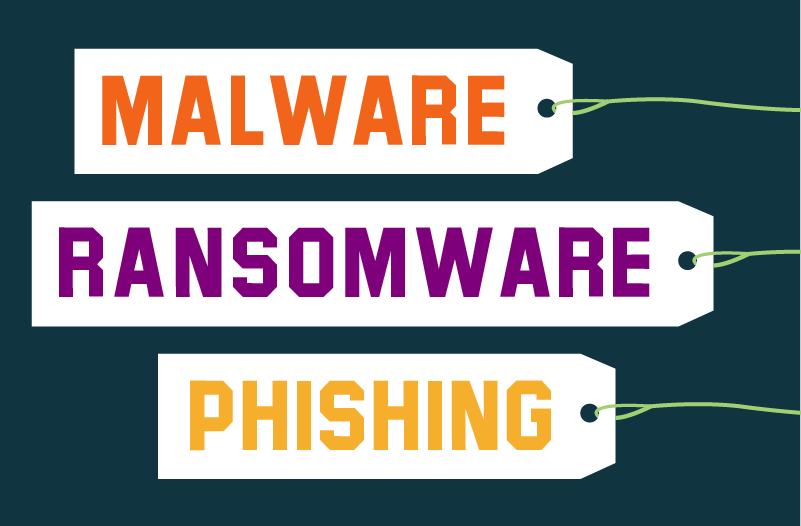
Dealing with IT service issues can bring a host of intimidating jargon. Here are some basic IT and cyber security terms and concepts to help you move from “heh?” to nodding your head knowingly.
Malware
Malware, or “malicious software,” is an umbrella term that describes any malicious program or code that is harmful to systems.
Malware seeks to invade, damage, or disable computers, computer systems, networks, tablets, and mobile devices, often by taking partial control over a device’s operations. Hostile, intrusive, and intentionally nasty. Like the human flu, it interferes with normal functioning.
Malware is all about making money off you illicitly. Although malware cannot damage the physical hardware of systems or network equipment, it can steal, encrypt, or delete your data, alter or hijack core computer functions, and spy on your computer activity without your knowledge or permission.
This is prevented with the Limetree Labs Core Security package.
Ransomware
Ransomware is a subset of malware in which the data on a victim’s computer is locked, typically by encryption. Then, payment is demanded before the ransomed data is decrypted and access is returned to the victim.
The motive for ransomware attacks is nearly always monetary. And, unlike other types of attacks, the victim is usually notified that an exploit has occurred and is given instructions for how to recover from the attack. Payment is often demanded in a virtual currency, such as Bitcoin, so that the cybercriminal’s identity is not known.
Intrusion protection system (IPS)
An intrusion prevention system (IPS) is a system that monitors a network for malicious activities such as security threats or policy violations. The main function of an IPS is to identify suspicious activity, and then log information, attempt to block the activity, and then finally to report it.
Social engineering
Social engineering is an attack vector that relies heavily on human interaction and often involves manipulating people into breaking normal security procedures and best practices. This allows the hacker to gain access to systems, networks or physical locations, often for financial gain.
Threat actors use social engineering techniques to conceal their true identities and motives and present themselves as a trusted individual or information source. The objective is to influence, manipulate, or trick users into giving up privileged information or access within an organization.
Many social engineering exploits simply rely on people’s willingness to be helpful. For example, the attacker might pretend to be a co-worker who has some kind of urgent problem that requires access to additional network resources.
Social engineering is a popular tactic among hackers because it is often easier to exploit users’ weaknesses than it is to find a network or software vulnerability. Hackers will often use social engineering tactics as a first step in a larger campaign to infiltrate a system or network and steal sensitive data or disperse malware.
Phishing
Phishing is the fraudulent practice of sending emails purporting to be from reputable companies in order to induce individuals to reveal personal information, such as passwords and credit card numbers.
Antivirus
Antivirus software is a class of program designed to prevent, detect and remove malware infections on individual computing devices, networks and IT systems.
Antivirus software, originally designed to detect and remove viruses from computers, can also protect against a wide variety of threats, including other types of malicious software.
This tool is all part of our Core Security package.
Zero-day attacks
A zero-day vulnerability is a software security flaw that is known to the software vendor but doesn’t have a patch in place to fix the flaw. It has the potential to be exploited by cybercriminals. These attacks can be detrimental to IT and cyber security.
Patch
A patch is a set of changes to a computer program or its supporting data designed to update, fix, or improve it. This includes fixing security vulnerabilities and other bugs, with such patches usually being called bug fixes, and improving the functionality, usability or performance. This is critical for IT and cyber security.
Redundant data
Data redundancy is a condition created within a database or data storage technology in which the same piece of data is held in two separate places. This can mean two different fields within a single database, or two different spots in multiple software environments or platforms.
Next time you hear one of these IT and cyber security terms, hopefully this guide will help. Get in touch with us today to find out just how we can help with your IT woes! Call 208-901-3350 or visit limetreelabs.com.




